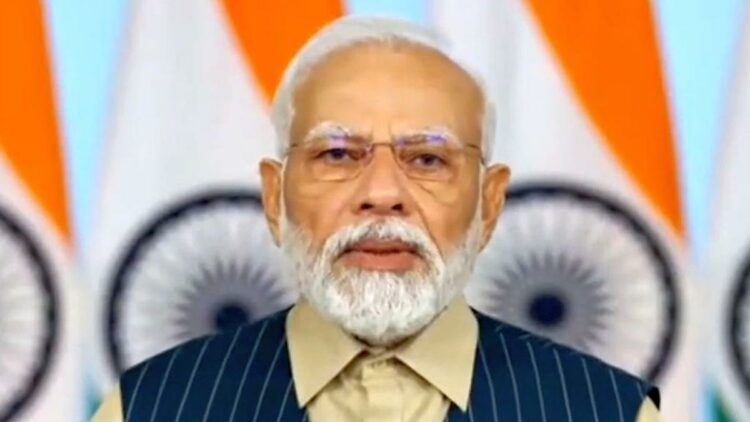At the meeting of G-20 Ministers of Digital Economy, In Bengaluru, PM Narendra Modi said that the Digital India campaign launched in 2015 was aimed at creating and achieving national financial inclusivity.
Speaking virtually, PM Modi presented India’s diversity as a resource that supports testing and solution of digital products from all over the world and said that it was necessary to build consensus on the G-20 high-level principles for a secure, trusted, and resilient digital economy.
“As the digital economy spreads globally, it will face security threats and challenges. In this context, building consensus on the high-level G-20 principles for a secure, resilient, and trusted digital economy is important. We in the G-20 have a unique opportunity to lay down the foundations for an inclusive, prosperous, and secure digital future,” he said.
He said that the digital economy and infrastructure should cater to farmers and small businesses and urged the need to create a framework for the safe and responsible use of Artificial Intelligence (AI).
India’s Digital Economy
“India’s digital transformation over the last nine years is unprecedented. It all started with the launch of our Digital India initiative in 2015. It is powered by our unshakable belief in innovation. It is driven by the spirit of inclusion, leaving no one behind,” Modi said.
He presented India’s digital economy as an enabling system and said that the country had leveraged technology to make governance inclusive and transparent. He highlighted the reach of Aadhar digital identity and said that it covers more than 1.3 billion citizens.
“We have used the power of the JAM Trinity, which stands for Jan Dhan Bank Accounts, Aadhar and Mobile, to revolutionize financial inclusion in India. Every month, nearly ten billion transactions take place in the UPI (Unified Payments Interface), our international pay system.
More than 45 per cent of the global real-time payments happen in India,” Modi said, emphasizing that the digital payments system had brought “probity” into the governance system.
Advantages
Some advantages of Digital India include an increase in electronic transactions due to e-governance, A Common Service Center (CSC) is created under the National e-Governance Project of the Indian government, which provides access to information and communication technology (ICT).
Through computer and Internet access, the CSCs provide multimedia content related to e-governance, education, health, telemedicine, entertainment, and other government and private services, and lastly, the establishment of digital villages along with well-equipped facilities such as solar lighting, LED assembly unit, sanitary napkin production unit, and Wi-Fi
Challenges
Some key challenges that have emerged are as follows: The WIFI speed is very slow compared to that of other developed nations. Many small-scale industries have to struggle a lot to adapt to modern technology. There is also a shortage of skilled manpower in the field of digital technology.
Digital India Initiatives
The Narendra Modi Government has created certain new mechanisms as a part of Digital India. Some of which include Digilocker, E-hospitals, E-Paatshala, and BHIM UPI. There are nine pillars to Digital India, which include Broadband Highways, Universal access to Mobile Connectivity, Public Interest Access Programme, e-governance, e-Kranti, Information For All, Early Harvest Programmes, Electronics Manufacturing
AI and Linguistics
Additionally, he announced that India was building “Bhashini,” an AI-based language transformation platform available in all Indian languages. “India is an incredibly diverse country, and we have dozens of languages and hundreds of dialects.
It is home to every religion in the world and innumerable cultural practices, from ancient traditions to the latest technology. India has something for everyone With such diversity, India is a testing lab for everyone. A solution that succeeds In India can be easily applied anywhere in the world.



















Comments